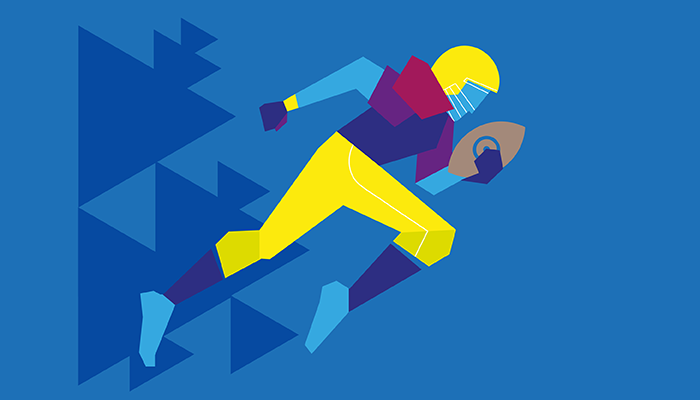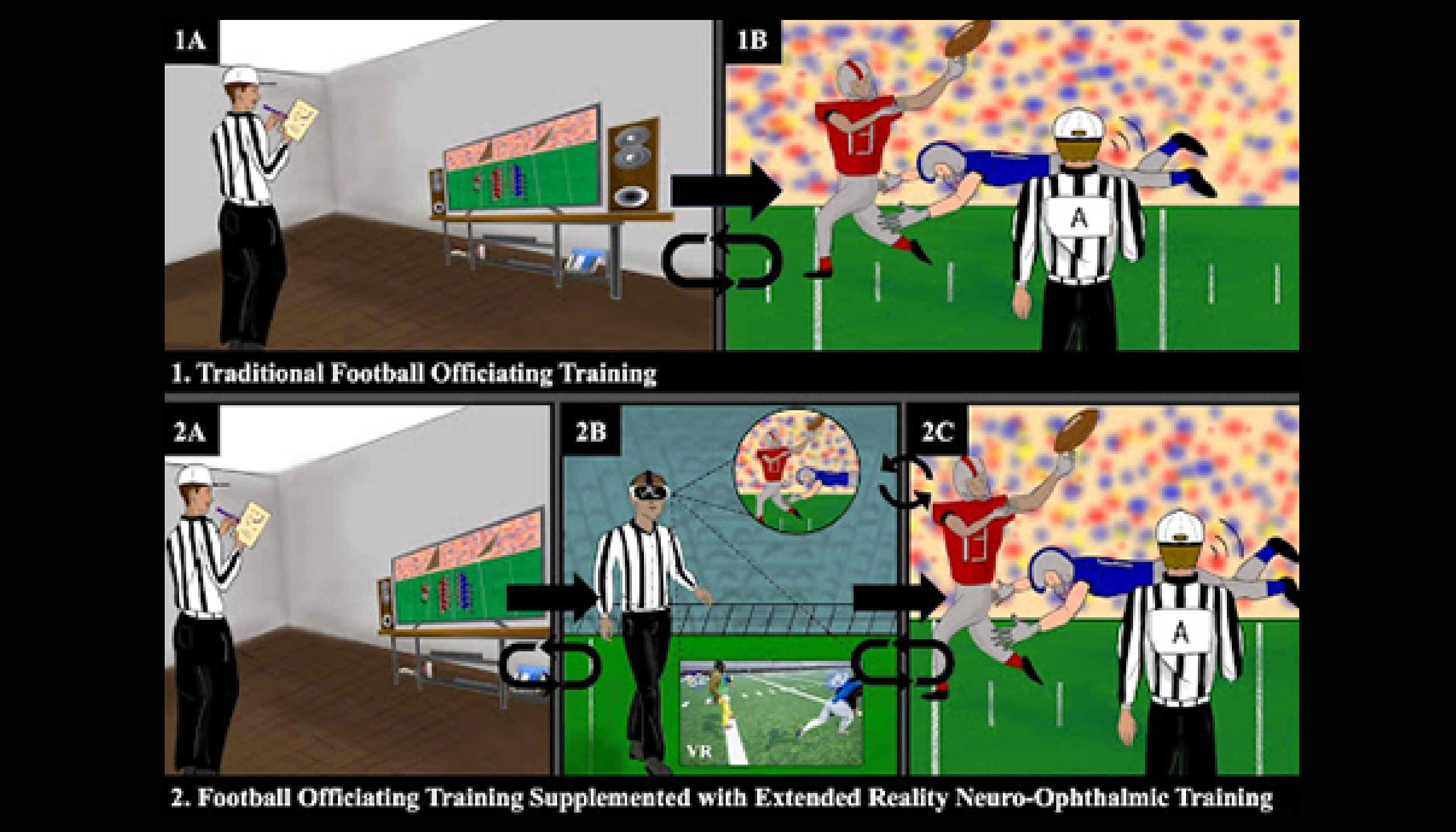
The precision and accuracy of on-field decisions made by National Football League (NFL) game officials can significantly impact both the outcomes of individual games and the overall fairness of professional football. A wrong decision can have multifaceted consequences from a personal, sporting, and financial perspective. So, how exactly can vision sciences create a scalable solution across various levels of football and possibly other sports in the future? One route might include the adoption of extended reality (XR)-based training environments that use quantifiable metrics to enhance the precision and accuracy of NFL play calling.
Neuro-ophthalmic principles encompass a broad spectrum of visual functions, each playing a distinct role in the perceptual acuity required on the field. Dynamic visual acuity, for instance, involves discerning detail during movement – a critical skill for NFL officials tasked with tracking players and the ball in dynamic game situations. Of course, maintaining sharp focus amidst rapid movement is essential for accurate decision-making as officials must quickly assess player actions and determine whether they conform to league rules.
Similarly, the vestibulo-ocular reflex (VOR) is a fundamental neuro-ophthalmic mechanism that enables visual stabilization during head movements. In NFL officiating, where officials may need to quickly shift their gaze or reorient their field of view in response to changing game dynamics, a robust VOR is crucial for maintaining visual clarity and stability. The VOR facilitates optimal visual performance in fast-paced and physically demanding environments by ensuring the visual system remains synchronized with head movements.
Moreover, sufficient visual field coverage is essential for NFL officials to monitor all aspects of play unfolding on the field effectively. The visual field encompasses the entire area that can be seen at any given moment without moving the eyes, including central and peripheral vision. A broad visual field enables officials to perceive the full scope of player interactions, potential rule infractions, and game dynamics, improving their ability to make accurate and timely decisions.
By integrating these neuro-ophthalmic fundamentals into officiating training, officials can optimize the perceptual acuity and visual stability required to support the complexities of NFL gameplay. In fact, collaborative research with the NFL has found that neuro-ophthalmic fundamentals are applicable to NFL officiating (1, 2). From dynamic visual acuity to the vestibulo-ocular reflex and visual field coverage, each aspect of neuro-ophthalmic function plays a role in ensuring fair and impartial officiating. Though it will require thorough training and education, officials are more than capable of honing these skills to improve the integrity and quality of NFL officiating.
Integration
In discussion with NFL officials at the 2023 Dallas Officials Meeting, there was significant interest in using XR for officiating training – an area our team had worked on for some time. Specifically, we developed realistic XR training to hone neuro-ophthalmic fundamentals and simulate difficult plays (3) (see Figure 1).
By immersing officials in lifelike 3D virtual environments, XR enables the simulation of on-field scenarios with unparalleled realism and complexity. This immersive experience offers several benefits for officiating education. One significant advantage of XR-based training is exposing officials to various game situations in a controlled environment. By replicating diverse play scenarios, officials can develop a comprehensive understanding of game dynamics and refine their decision-making skills across multiple contexts. Furthermore, XR training allows officials to practice under pressure in a risk-free setting – without impacting live gameplay.
XR technology is also highly adaptable to the specific needs of individual officials. With customizable scenarios and feedback mechanisms, officials can focus on areas of weakness and track their progress over time. This, in turn, ensures that officials receive targeted instruction and support, thereby enhancing their on-field performance.
Modern solutions
NFL officiating, sooner rather than later, must face the demands of the modern game with modern solutions – and that is exactly what the complete integration of XR training will bring. The techniques being researched are rooted in the principles of neuro-ophthalmology and can provide a foundational understanding of visual function to help officials elevate their overall performance. From the precise calculation of foveation time to the intricate dynamics of the vestibulo-ocular reflex, every aspect of visual function is meticulously simulated to enhance officials’ perceptual acuity and decision-making prowess. Now, it’s a case of finding the right strategies and measures to implement these principles for real-time officiating.

Figure 1. Panel 1 indicates traditional football officiating training. Panel 2 indicates football officiating training supplemented with extended reality neuro-ophthalmic training which allows for training in a 3D virtual environment to practice neuro-ophthalmic fundamentals and officiating difficult plays.
This article first appeared in The New Optometrist.
References
- NV Carrabba, et al., “National Football League Game Officials Self-Rating of Knowledge in Neuro-Ophthalmic Principles and Practice: A Pilot Program to Improve Precision and Accuracy of Game Official Calls,” J Neuroophthalmol (2024). PMID: 38659103
- AZ Vogt, et al., “Curriculum in Neuro-Ophthalmic Principles for National Football League Game Officials: Comparison of Pretraining and Posttraining Ratings of Knowledge,” J Neuroophthalmol (2023). PMID: 37440342
- J Ong, et al., et al, “Dynamic Visual Acuity, Vestibulo-Ocular Reflex, and Visual Field in National Football League (NFL) Officiating: Physiology and Visualization Engineering for 3D Virtual On-Field Training,” Vision (Basel), 8, 2, (2024). PMID: 38804356
